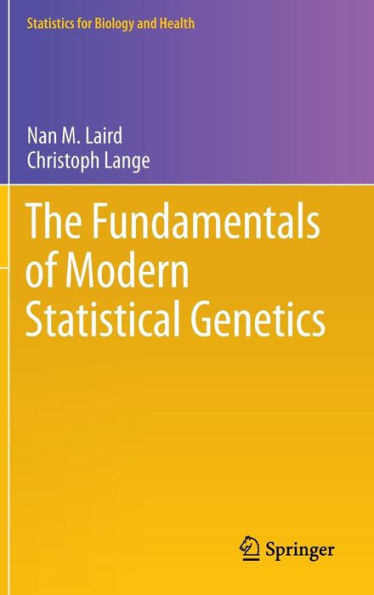The Fundamentals of Modern Statistical Genetics
This book covers the statistical models and methods that are used to understand human genetics, following the historical and recent developments of human genetics. Starting with Mendel’s first experiments to genome-wide association studies, the book describes how genetic information can be incorporated into statistical models to discover disease genes. All commonly used approaches in statistical genetics (e.g. aggregation analysis, segregation, linkage analysis, etc), are used, but the focus of the book is modern approaches to association analysis. Numerous examples illustrate key points throughout the text, both of Mendelian and complex genetic disorders. The intended audience is statisticians, biostatisticians, epidemiologists and quantitatively- oriented geneticists and health scientists wanting to learn about statistical methods for genetic analysis, whether to better analyze genetic data, or to pursue research in methodology. A background in intermediate level statistical methods is required. The authors include few mathematical derivations, and the exercises provide problems for students with a broad range of skill levels. No background in genetics is assumed.
1101678417
The Fundamentals of Modern Statistical Genetics
This book covers the statistical models and methods that are used to understand human genetics, following the historical and recent developments of human genetics. Starting with Mendel’s first experiments to genome-wide association studies, the book describes how genetic information can be incorporated into statistical models to discover disease genes. All commonly used approaches in statistical genetics (e.g. aggregation analysis, segregation, linkage analysis, etc), are used, but the focus of the book is modern approaches to association analysis. Numerous examples illustrate key points throughout the text, both of Mendelian and complex genetic disorders. The intended audience is statisticians, biostatisticians, epidemiologists and quantitatively- oriented geneticists and health scientists wanting to learn about statistical methods for genetic analysis, whether to better analyze genetic data, or to pursue research in methodology. A background in intermediate level statistical methods is required. The authors include few mathematical derivations, and the exercises provide problems for students with a broad range of skill levels. No background in genetics is assumed.
129.99
In Stock
5
1

The Fundamentals of Modern Statistical Genetics
226
The Fundamentals of Modern Statistical Genetics
226
129.99
In Stock

Product Details
| ISBN-13: | 9781441973375 |
|---|---|
| Publisher: | Springer New York |
| Publication date: | 12/02/2010 |
| Series: | Statistics for Biology and Health |
| Edition description: | 2011 |
| Pages: | 226 |
| Product dimensions: | 6.00(w) x 9.20(h) x 0.80(d) |
About the Author
From the B&N Reads Blog
